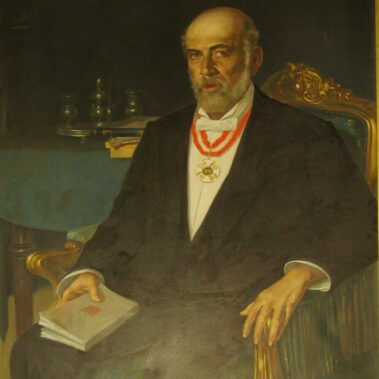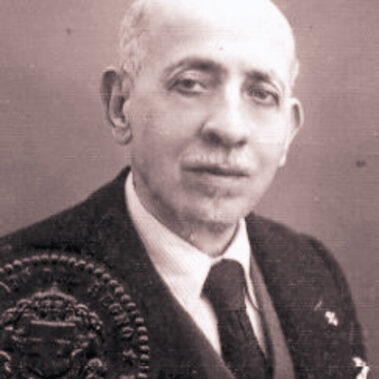Commendatore Salvatore Spadaro di Passanitello
The only son born from the marriage of Commendatore Salvatore Spadaro di Passanitello and Donna Cecchina Libertini. Coming from a family of cultured aristocrats with a strong inclination towards politics and the rigorous and honest management of public affairs, young Francesco completed classical studies at the prestigious Benedictine Monks College in Montecassino and then attended the Faculty of Law in Padua, where he graduated in Canon Law. An avid scholar of the history of his city, he is credited with translating from Latin the destroyed book by Pierpaolo Morretta “Caltagirone Città Gratissima” from 1634, a priceless testimony of the origins and history of the city. Additionally, his passion for history made him a respected heraldist, and he is responsible for the transcription and compilation of the “Mastre Senatorie” of the cities of Sicily from the 16th century until the end of the Feudal era on June 2, 1813. This book, published in 1938 by the Institute of Historical and Noble Law Studies in Rome, titled “Le Mastre Nobili,” remains one of the most accredited references for studying the genealogy of Sicilian noble families.
An unforgettable mayor of Caltagirone, elected with a large majority following the fall of the fascist regime, with the Civic List named Madonna del Ponte, his portrait is housed alongside that of his maternal grandfather Michelangelo Libertini at the Municipality. An archaeologist and ceramics collector, he amassed one of the richest collections of ceramic artifacts, contributing to the fame of the Palazzo, which was by then named in his honor, Palazzo Spadaro Libertini. He married the young and beautiful heiress Gerolama, Mina, Gravina, belonging to one of the oldest families in Sicily and Caltagirone, with whom he had four children, one daughter, and three sons. The youngest, Arch. Alvise Spadaro, passed the torch of the most significant part of the Palazzo, both in size and historical importance, to his maternal cousin, Lara Gravina of the Belmonte Beaumont branch, thus ensuring the preservation and continuity of the imposing residence within the family.




